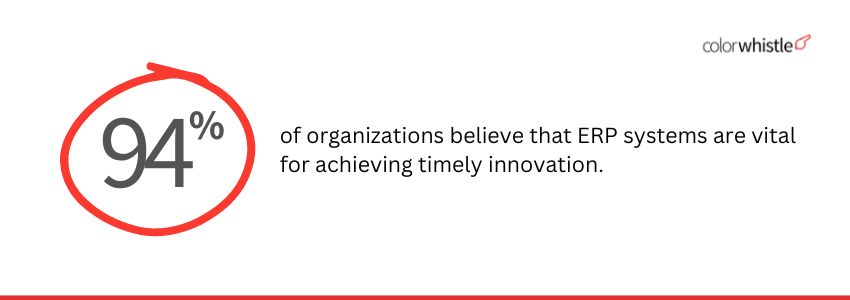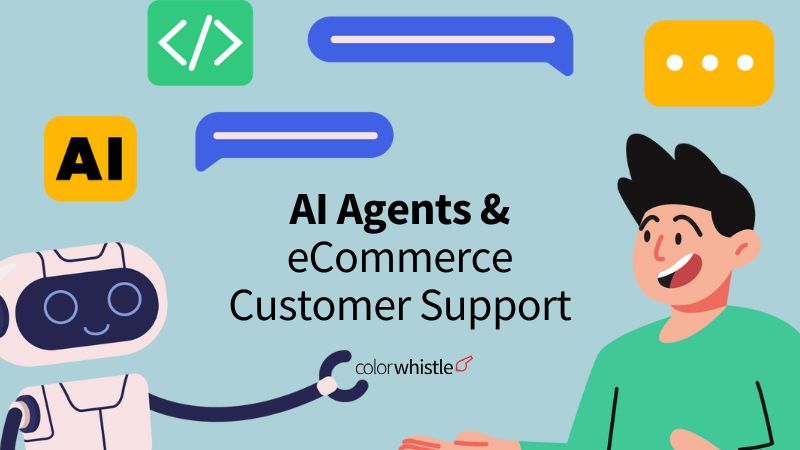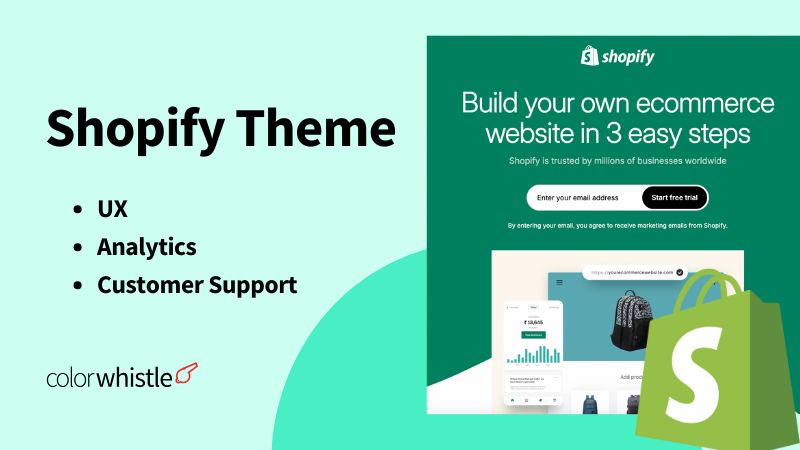In today’s competitive e-commerce landscape, efficient processes are key to success. One powerful tool that many top brands rely on is ERP (Enterprise Resource Planning) systems. Integrating an ERP system with platforms like Shopify is an essential step for businesses looking to streamline operations, boost efficiency, and enhance customer experience.
This blog will walk you through everything you need to know about integrating Shopify with ERP systems, covering the benefits, common challenges, and various integration methods. Whether it is a B2B, B2C, or DTC business, this guide will help you better understand how ERP systems can transform the overall business operations. Integrating an ERP system plays a crucial role in e-commerce website development and ongoing store maintenance, which we address in our Essential Shopify Store Maintenance Checklist for 2025.
Types of ERP Systems
When considering ERP (Enterprise Resource Planning) integration for the Shopify store, it’s important to understand the different types of ERP systems available. ERP systems come in various forms, each designed to suit the specific needs of different types of businesses. Below are the main types of ERP systems, categorized based on deployment, architecture, and user scale.
1. On-Premise ERP
On-premise ERP refers to ERP systems that are hosted locally on the company’s servers and hardware. These systems require businesses to manage and maintain the software internally, which includes both data storage and system updates.
Key Features:
- With on-premise ERP, businesses have full control over the system’s customization, security, and deployment.
- Typically, on-premise ERP systems involve a large, upfront cost for the software license, but no ongoing subscription fees.
- Companies can customize on-premise ERPs to their specific processes and needs.
- Ideal for large enterprises with dedicated IT teams that need high customization and control.
2. Cloud-based ERP
Cloud-based ERP, also known as SaaS (Software as a Service) ERP, is hosted on the cloud and accessed via the Internet. These systems are maintained by the vendor, with businesses paying for the service on a subscription basis.
Key Features:
- Cloud ERP systems typically have lower upfront costs since users don’t need to invest in hardware or large IT teams.
- Businesses can scale their usage up or down based on demand, without additional infrastructure.
- The ERP provider handles system updates, security patches, and backups.
- Employees can access the system from anywhere with an internet connection.
- Ideal for small and medium-sized businesses (SMBs) or growing enterprises looking for scalable solutions with lower IT overhead.
3. Hybrid ERP
Hybrid ERP systems offer a combination of on-premise and cloud-based deployment, allowing businesses to choose which parts of their ERP to host on-premise and which to move to the cloud.
Key Features:
- Businesses can benefit from both on-premise and cloud ERP functionalities, balancing control with flexibility.
- Critical processes can remain on-premise, while less essential functions (e.g., human resources or accounting) can be moved to the cloud to save costs.
- Hybrid systems allow for seamless data flow between on-premise and cloud-based modules.
- Ideal for businesses with complex operations that want a tailored mix of control and cloud-based scalability.
Also Read
What is an ERP Integration?
At its core, ERP integration is the process of connecting an enterprise resource planning system with other software applications, databases, or external systems. The goal is to create a unified flow of information across different departments—whether it’s finance, procurement, logistics, or sales. This seamless synchronization enhances visibility, efficiency, and decision-making capabilities within an organization.
For e-commerce platforms like Shopify, ERP integration allows businesses to automate processes such as order fulfillment, inventory management, and customer data flow. It turns fragmented systems into a unified whole, helping brands operate more smoothly.
Why Integrate Shopify with an ERP System?
Many businesses start small, using simple tools and methods to manage orders, customers, and inventory. As they grow, these processes become more complex, and disconnected systems result in inefficiencies, human errors, and time-consuming manual tasks. Integrating Shopify with an ERP system addresses these challenges by creating a centralized, automated system for e-commerce operations.
Key Reasons to Integrate:
Improved Data Accuracy: Synchronizing data between Shopify and an ERP system minimizes human errors and eliminates duplicate entries.
Automated Processes: Automate tasks like inventory management, order tracking, and invoicing, saving valuable time and resources.
Scalability: As the business expands, ERP integration ensures you can handle increased transaction volume and operational complexity without breaking a sweat.
Real-time Insights: Get access to real-time data to make informed decisions about inventory levels, order fulfillment, and customer preferences.
Types of ERP Integrations
When integrating an ERP system with Shopify, businesses typically choose between the following three methods, each offering unique benefits depending on the company’s needs and IT resources.
Custom Integrations:
Custom ERP integrations involve building a unique solution tailored to a business’s specific requirements. Developers match a software’s API with the ERP system to ensure seamless integration. This method offers complete control but requires a dedicated team of technical resources, making it time-consuming and costly.
Vendor-built or Native Integrations:
Some ERP vendors provide out-of-the-box integrations that connect directly with platforms like Shopify. These native integrations are pre-built and cover common use cases, such as syncing inventory, orders, and customer information. They are a popular choice because they save time and money while offering fast implementation.
Integration Platform as a Service (iPaaS):
iPaaS solutions allow businesses to build, deploy, and manage cloud-based integrations between ERP systems and other platforms, including Shopify. These tools offer flexibility and are scalable, without the need to manage hardware or additional infrastructure. iPaaS solutions are often used to automate workflows across multiple cloud-based applications.
Did You Know:
73% of companies focus on eliminating data silos and enhancing collaboration through integrated solutions.
Benefits of ERP Integration for Shopify Businesses
When integrated effectively, an ERP system can drastically improve the efficiency of your e-commerce operations. Here are some key benefits:
1. Upgraded Legacy Systems:
Many businesses still use outdated systems that don’t support modern e-commerce requirements. An ERP integration helps upgrade legacy systems by providing new functionalities, real-time data analytics, and enhanced capabilities that support global operations and complex supply chains.
2. Centralized Data:
One of the primary benefits of ERP integration is centralized data management. Instead of each department using different databases and systems, all relevant information is available in one place. This eliminates the need for duplicate data entry, reduces errors, and improves collaboration across departments.
3. Automated Processes:
Automation is one of the main advantages of integrating Shopify with an ERP system. Routine tasks like order processing, inventory updates, and invoicing can be automated, freeing up human resources to focus on more strategic activities. Automation also reduces the risk of costly errors.
4. Enhanced Customer Experience:
A seamless ERP integration helps improve the customer experience by ensuring that your e-commerce platform offers real-time product availability, personalized pricing, and accurate order tracking. Customers enjoy faster delivery times and more reliable service, leading to higher satisfaction and repeat business.
5. Improved Financial Management:
With ERP integration, financial data flows automatically from the Shopify store to the ERP system, simplifying the tracking of sales, managing accounting, and generating financial reports. This automation allows for streamlined financial audits and provides better oversight of revenue, expenses, and profit margins.
Also Read
Common Challenges in ERP Integration
Despite the significant advantages, ERP integrations aren’t without their challenges. Here are some of the common hurdles businesses face during the integration process:
Budget Overruns: ERP implementations often cost more than initially planned, sometimes by as much as three or four times. While the long-term benefits outweigh the initial costs, businesses should plan their budgets carefully and allocate sufficient resources.
Data Security Risks: Integrating multiple systems increases the risk of unsecured connections, which can expose sensitive company and customer data to cyber threats. It’s critical to work with secure ERP solutions and ensure data protection is a top priority.
System Complexity: ERP systems are often complex, and integrating them with other platforms adds additional layers of complexity. Poor communication, lack of training, and improper planning can lead to implementation failures. It’s important to have a solid strategy, clear documentation, and internal champions who can drive system adoption.
Best Practices for ERP Integration
To ensure a smooth and successful ERP integration with Shopify, businesses should follow these best practices:
- Assess Business Needs: Before selecting an ERP system, it is essential to evaluate business processes and identify areas requiring improvement.
- Choose the Right Integration Method: Whether opting for custom integrations, native solutions, or iPaaS, ensure that the chosen method aligns with the company’s goals and technical capabilities.
- Test Thoroughly: Given the complexity of ERP integrations, thorough testing is crucial. Every aspect of the system should be tested to ensure seamless performance.
- Plan for Training: The team must understand how to use the integrated system. Comprehensive training and documentation should be provided to prevent any issues after implementation.
Use Case: Shopify and NetSuite ERP Integration
To better understand how ERP integration works in practice, consider the popular Shopify-NetSuite integration. NetSuite is a cloud-based ERP system commonly used by large e-commerce businesses.
With this integration, businesses can automate various processes:
- Order Fulfillment: Orders placed on Shopify are automatically synced with NetSuite, allowing for faster and more accurate order processing.
- Inventory Management: NetSuite updates Shopify with real-time inventory levels, helping avoid overselling or stockouts.
- Customer Data: Customer information is shared between the platforms, allowing for more personalized marketing and communication.
By automating these processes, businesses can save time, reduce labor costs, and increase customer satisfaction through quicker order fulfillment.
Wrapping Up
Integrating Shopify with an ERP system is crucial for optimizing e-commerce website development and enhancing business efficiency. By understanding different ERP types and integration methods, businesses can automate tasks, improve data accuracy, and provide a seamless customer experience.
As the e-commerce landscape evolves, effective ERP integration is essential for staying competitive. With the right strategy, companies can overcome challenges and unlock significant benefits.
For businesses looking to enhance their operations, ColorWhistle is here to help. Contact us today to discover how our e-commerce website development services can assist you in transforming your e-commerce business!
What’s Next?
Now that you’ve had the chance to explore our blog, it’s time to take the next step and see what opportunities await!







This post is a great resource for understanding ERP integration with Shopify! Just as ghost mannequin photography removes unnecessary elements to highlight the product, integrating ERP systems simplifies processes, eliminating redundancies and focusing on the essentials.